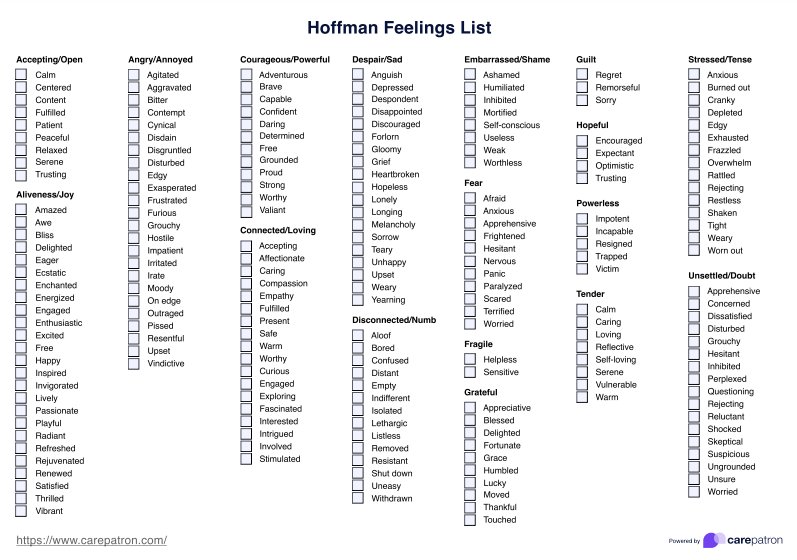The "30 emotions" concept categorizes emotions into distinct groups based on emotional states and their variations. These include both negative and positive emotions, covering a spectrum that reflects human experiences. Some commonly recognized categories include basic emotions (happiness, sadness, fear, anger, surprise, and disgust); social emotions (pride, shame, guilt, and embarrassment); and sensory pleasure emotions (excitement, contentment, and calm).

Hoffman Feelings List
Learn about the Hoffman Feelings List. Download a free PDF template for your practice now.
Hoffman Feelings List Template
Commonly asked questions
The idea of "34,000 emotions" originates from the work of psychologist Dr. Robert Plutchik, who developed the Wheel of Emotions to illustrate the complexity of human feelings. This concept demonstrates how combinations of one emotion with another, or even multiple different emotions, can create other emotions as well as varying intensity levels, leading to various emotional states.
The Hoffman process is a therapeutic method to help individuals break free from habitual negative emotions and behavioral patterns. The process involves four structured steps: awareness, expression, forgiveness, and new behavior integration.
EHR and practice management software
Get started for free
*No credit card required
Free
$0/usd
Unlimited clients
Telehealth
1GB of storage
Client portal text
Automated billing and online payments











